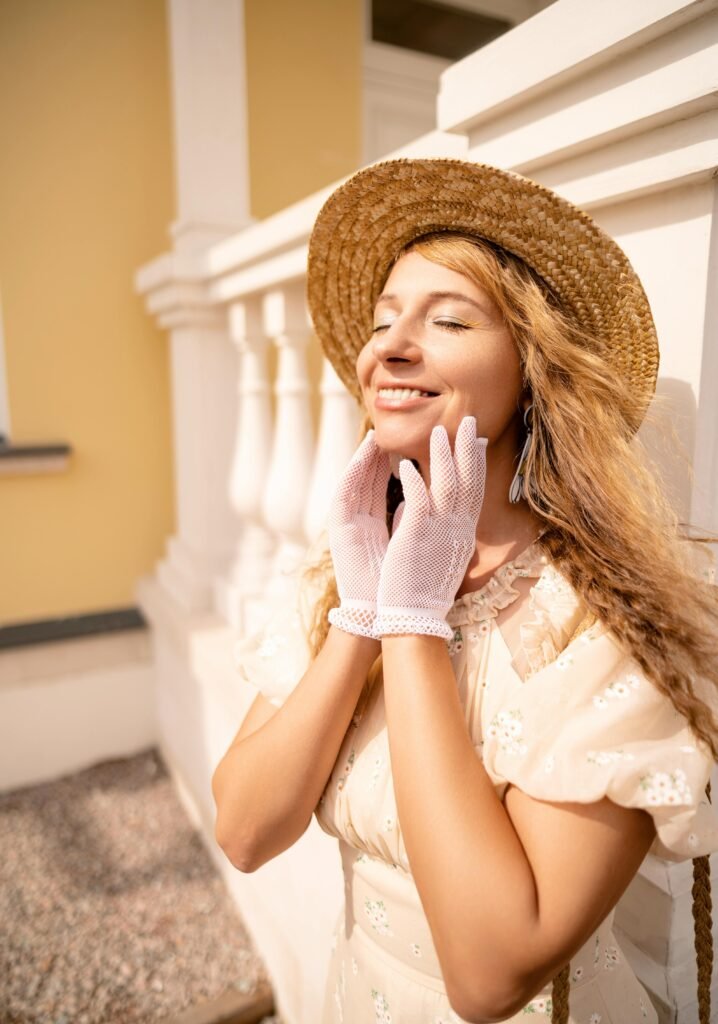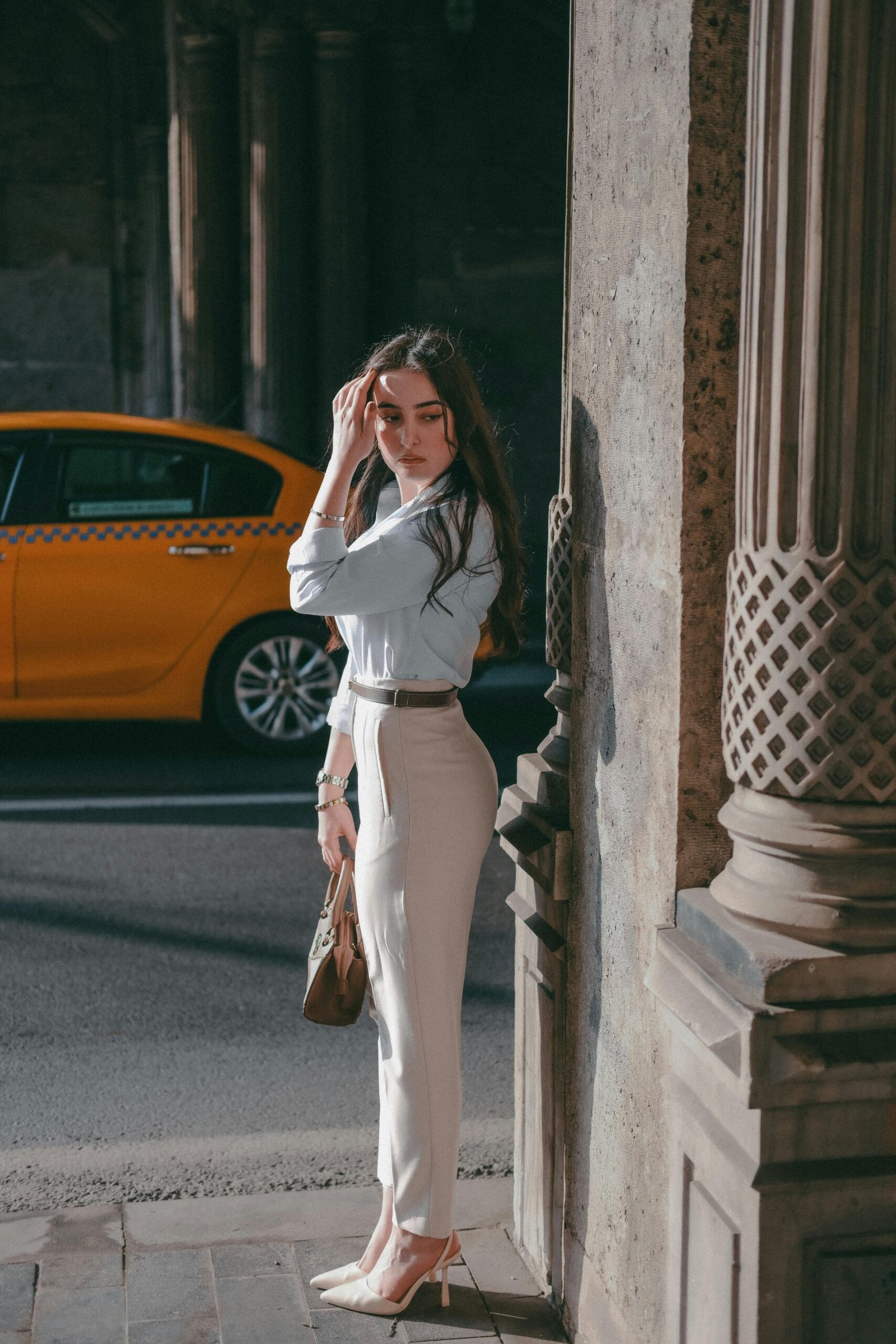Looking to add some old-world charm to your everyday essentials? If so, then navigating the vintage leather wallet market may be just the adventure you’re looking for. From unique designs and craftsmanship to the timeless beauty of aged leather, these wallets hold stories and character that simply can’t be replicated. But before you dive into this vintage treasure trove, it’s essential to arm yourself with a few tips and tricks that will ensure you make the right choice. In this article, we will guide you through the world of vintage leather wallets, helping you make informed decisions and find the perfect piece to add a touch of history to your pockets. So, grab a cup of coffee and let’s embark on this stylish journey together.

This image is property of images.pexels.com.
Researching Vintage Leather Wallets
Understanding the history of vintage leather wallets
When researching vintage leather wallets, it’s essential to have a good understanding of their history. Leather wallets have been used for centuries to store money, cards, and other essentials. By knowing their history, you can gain valuable insights into the different styles, materials, and craftsmanship techniques employed throughout the years.
Take the time to educate yourself about the evolution of leather wallets, from their humble beginnings to more intricate and stylish designs. Understanding the historical significance will not only help you appreciate the craftsmanship behind each vintage piece but also enable you to identify different eras and styles accurately.
Identifying popular vintage leather wallet brands
Many renowned brands have produced high-quality vintage leather wallets. Identifying these popular brands can be a great starting point in your research. Look out for names such as Gucci, Coach, Hermès, Louis Vuitton, and Saddleback Leather among others.
It’s worth noting that some brands have specific characteristics that make their wallets easily identifiable. This includes signature logos, unique embossing patterns, or even particular types of leather used. By familiarizing yourself with these brand-specific details, you’ll be better equipped to spot authentic pieces in the market.
Researching different types of vintage leather wallets
Vintage leather wallets come in various styles and designs, each catering to different tastes and needs. Take the time to research and understand the different types available. This could include bi-folds, tri-folds, cardholders, money clips, or even passport wallets.
By researching different types of vintage wallets, you can gain an understanding of their features, sizes, and functionalities. This knowledge will help you make an informed decision and find a wallet that suits your preferences and requirements.
Evaluating Authenticity
Examining craftsmanship and materials
When evaluating the authenticity of a vintage leather wallet, pay close attention to the craftsmanship and materials used. Genuine vintage wallets are often meticulously crafted with attention to detail. Look for quality stitching, precise cutting, and well-finished edges. The use of high-quality leather is also a significant indicator of authenticity.
Inspect the seams and edges of the wallet for any signs of poor craftsmanship or uneven stitching. Authentic vintage wallets will demonstrate exceptional quality in both material selection and construction.
Checking for brand-specific markings
Certain vintage wallet brands are known for incorporating distinct and recognizable markings into their designs. These markings can include embossed logos, stamped serial numbers, or even unique hardware. Research the specific brand you are interested in and familiarize yourself with these markers of authenticity.
While counterfeiters may try to replicate these markings, paying attention to detail and comparing them to authentic examples can help you identify genuine vintage wallets.
Verifying vintage authenticity through age indicators
Another way to evaluate the authenticity of a vintage wallet is by examining age indicators. This includes factors such as the wear and tear of the leather, the patina that develops over time, and any unique characteristics that vintage pieces acquire through decades of use.
Research the specific era or period of the wallet you are interested in and compare it to authenticated vintage pieces from that time. By studying and comparing age indicators, you can make a more informed judgment about the authenticity of a vintage leather wallet.

This image is property of images.pexels.com.
Assessing Condition
Inspecting for signs of wear and tear
Vintage leather wallets, by their very nature, will show signs of wear and tear. However, it’s crucial to assess the extent of the damage and determine whether it affects the usability and overall value of the wallet. Scratches, scuffs, and discoloration are common, but excessive damage, such as ripped seams or broken hardware, may significantly impact the wallet’s longevity.
Inspect the wallet thoroughly, both inside and out, for any visible signs of damage. Remember that some wear can add character and authenticity, but be cautious of excessive wear that compromises the wallet’s functionality.
Checking the integrity of the stitching
The stitching on a vintage leather wallet plays a vital role in its overall condition and durability. Examine the stitching carefully to ensure it is secure and intact. Loose threads, uneven stitches, or signs of re-stitching may indicate poor repair or subpar craftsmanship.
High-quality vintage wallets will have tight and consistent stitching that shows no signs of unraveling. If the stitching is compromised, consider the potential repair costs and whether it is worth investing in the wallet.
Examining the condition of the leather
The condition of the leather is one of the most critical aspects when assessing the value and condition of a vintage wallet. Look for signs of cracking, peeling, or dryness, as these can indicate poor leather quality or inadequate maintenance.
Aged leather often develops a desirable patina, characterized by a rich, deep color and a soft, supple texture. However, make sure the leather is not excessively worn or damaged beyond repair. Consider whether you are comfortable with the existing condition and if any restoration processes are necessary to bring it back to a satisfactory state.
Understanding Value and Pricing
Researching current market prices
To determine the value of a vintage leather wallet, research current market prices for similar items. Browse through reputable online platforms, auction houses, and vintage stores to get an idea of the price range for different brands, styles, and conditions.
Keep in mind that prices can fluctuate depending on demand, scarcity, and the overall condition of the wallet. Take note of comparable sales and market trends to gauge the fair value of the wallet you are interested in.
Considering factors that influence value
Several factors can influence the value of a vintage leather wallet. Rarity, brand reputation, historical significance, and overall condition are some of the key considerations. Limited edition pieces, wallets with unique features, or those associated with influential periods or designers may command higher prices.
Additionally, wallets in excellent condition, with minimal wear and tear and intact original packaging, are often more valuable. Be sure to factor in these elements when determining the worth of a vintage wallet.
Determining fair pricing for different conditions
Vintage leather wallets are typically sold in various conditions, ranging from “like-new” to “heavily used.” Each condition will have a different price point, reflecting the amount of wear and tear and the overall quality of the wallet.
Consider your budget, personal preferences, and intended usage when determining the right condition for you. While a wallet in excellent condition may be desirable, a well-worn vintage piece can carry its charm and character. Set a budget that aligns with your expectations and prioritize the condition that best suits your needs.

This image is property of images.pexels.com.
Where to Buy Vintage Leather Wallets
Exploring online marketplaces
When it comes to buying vintage leather wallets, online marketplaces offer a vast selection and convenience. Platforms like eBay, Etsy, and specialized vintage websites allow you to browse through a wide variety of listings from sellers worldwide.
When shopping online, exercise caution and thoroughly research the seller’s reputation and authenticity claims. Look for detailed product descriptions, clear photographs, and, if possible, customer reviews to ensure a positive buying experience.
Visiting antique stores and vintage boutiques
Antique stores and vintage boutiques can be treasure troves for finding unique and authentic vintage leather wallets. Visit local establishments that specialize in vintage goods and explore their selections. The advantage of shopping in person is the ability to physically examine and feel the wallets before making a purchase.
Engage with the staff and inquire about their sourcing practices to ensure they have a genuine collection. Build relationships with these store owners, as they can be valuable resources for future vintage wallet finds.
Attending flea markets and thrift shops
Flea markets and thrift shops are popular destinations for vintage enthusiasts seeking unique and affordable finds. These venues often have a wide range of items, including vintage leather wallets.
When visiting flea markets and thrift shops, be prepared to spend time sifting through different booths and sections. Vintage wallets may not always be prominently displayed, so having patience and being thorough in your search will increase your chances of finding hidden gems at affordable prices.
Negotiating and Bargaining
Learning effective negotiation strategies
Negotiating the price of a vintage leather wallet is a common practice, especially when buying from individual sellers or at markets. Learning effective negotiation strategies can help you secure the best deal.
Research the wallet’s fair market value beforehand to have a solid understanding of a reasonable price range. Always approach negotiations politely and respectfully, expressing genuine interest in the wallet while simultaneously negotiating for a fair price.
Understanding the art of bargaining
Bargaining is a skill that can be honed when shopping for vintage leather wallets. Understanding the art of bargaining involves knowing when to make an offer, when to counteroffer, and when to walk away.
Be respectful and maintain open communication with the seller, recognizing that bargaining is a typical part of the buying process. Remember that both parties should feel satisfied with the final negotiated price.
Knowing when and how to negotiate the price
Knowing when and how to negotiate the price of a vintage leather wallet requires observation and intuition. Pay attention to the seller’s willingness to negotiate and any signs that they may be open to a lower price.
Start by establishing a friendly rapport with the seller and expressing your interest in the wallet. Inquire about any flexibility in the price or if there are factors that could justify a lower offer. Be prepared to justify your negotiations with valid reasons, such as minor cosmetic flaws or comparable items sold at lower prices.
Ensuring Authenticity and Quality
Buying from reputable sellers
To ensure authenticity and quality, it is crucial to buy vintage leather wallets from reputable sellers. Look for sellers who have established reputations for selling authentic vintage items. Read customer reviews, seek recommendations from fellow collectors, and ensure that the seller has a fair return policy to protect your purchase.
If buying online, examine the seller’s product descriptions, photographs, and authenticity guarantees. Reputable sellers will often provide detailed information about the wallet’s condition, provenance, and any notable features or flaws.
Verifying authenticity through specialized experts
If you are uncertain about the authenticity of a vintage leather wallet, consider consulting specialized experts. These experts have the knowledge and experience to authenticate and appraise vintage wallets accurately. Their expertise can help you avoid counterfeit items and make more informed purchasing decisions.
Seek out reputable vintage authentication services or connect with knowledgeable collectors who may be able to assist you. Remember that authentication services may come at a cost, which should be factored into your overall budget.
Examining return policies and guarantees
When buying a vintage leather wallet, carefully review the seller’s return policy and any guarantees they offer. A fair return policy ensures that you have the opportunity to examine the wallet in person and determine its authenticity and condition to your satisfaction.
Ideally, choose sellers who offer a reasonable return window and clearly outline the conditions for returns. This provides peace of mind and minimizes the risk of being stuck with a counterfeit or misrepresented wallet.
Proper Care and Maintenance
Using leather conditioners and cleaners
Proper care and maintenance are crucial for preserving the longevity and beauty of your vintage leather wallet. Invest in high-quality leather conditioners and cleaners specially formulated for vintage leather. Follow the instructions provided by the manufacturer to ensure that you do not damage or discolor the leather.
Regularly apply leather conditioner to keep the leather moisturized, supple, and resistant to cracking. Clean the wallet with a gentle leather cleaner to remove dirt and stains while avoiding harsh chemicals or abrasive techniques.
Storing vintage wallets correctly
When not in use, store your vintage leather wallet in a cool, dry place away from direct sunlight. Exposure to excessive heat, humidity, or sunlight can cause the leather to fade or become brittle. Consider using a soft, breathable pouch or tissue paper to protect the wallet from dust and scratches.
Avoid storing the wallet in plastic or airtight containers, as this can trap moisture and promote mold growth. Allow the leather to breathe to maintain its quality over time.
Avoiding common mistakes that may damage the wallet
To preserve the condition of your vintage leather wallet, avoid common mistakes that can potentially damage the wallet. Do not overstuff the wallet with excessive cards and cash, as this can strain the seams and stretch the leather.
Avoid exposing the wallet to extreme temperature changes or water, as this can cause the leather to warp, crack, or discolor. Additionally, avoid using harsh cleaning products or abrasive materials that may scratch or strip the leather’s natural oils.
Collecting and Niche Markets
Exploring specific vintage wallet collections
For avid vintage enthusiasts, exploring specific vintage wallet collections can be an exciting endeavor. Some collectors focus on specific brands, eras, or unique features. Take the time to research and discover niche collections that align with your interests.
By diving into niche markets, you can find hidden gems and rare vintage wallets that may not be as widely known or appreciated. Embrace the thrill of the hunt and connect with other collectors who share your passion.
Understanding niche markets and limited editions
Niche markets within the vintage leather wallet world cater to collectors who have a specific taste or interest. Limited editions, collaborations, or designs associated with iconic figures or eras often fall into niche markets.
These wallets can hold significant value to collectors and may require more in-depth research and networking to acquire. By understanding niche markets and limited editions, you can explore unique avenues for expanding your vintage wallet collection.
Researching sought-after vintage wallet features
Different vintage wallet features attract different collectors. Some collectors value wallets with unique hardware, rare embossing patterns, or distinct leather textures. Research and familiarize yourself with sought-after features that vintage enthusiasts often desire.
By focusing on sought-after features, you can narrow down your preferences and make informed purchasing decisions. This knowledge will also be valuable when appraising or potentially selling your vintage wallet collection in the future.
Preserving the Investment
Protecting vintage wallets from environmental factors
Once you’ve acquired a valuable vintage leather wallet, it’s essential to protect your investment from environmental factors. Store your wallet in a controlled environment, avoiding exposure to excessive heat, moisture, or direct sunlight. Consider using protective coverings or display cases to shield the wallet from dust, dirt, and potential damage.
If traveling with your vintage wallet, use a protective pouch or wrap it in a soft cloth to prevent scratches or abrasions. By taking proactive measures to protect your investment, you can ensure that your vintage wallet remains in excellent condition for years to come.
Taking proper care during usage
When using your vintage leather wallet, handle it with care to minimize wear and tear. Avoid excessive bending or overstuffing the wallet, as this can strain the material and compromise its integrity. Gentle handling and regular maintenance will prolong the wallet’s lifespan and preserve its value.
Be mindful of potential hazards when using the wallet, such as sharp objects or harsh surfaces, which could scratch or puncture the leather. Treat your vintage wallet as a cherished possession and take pride in its history and craftsmanship.
Considering professional restoration and preservation services
If your vintage leather wallet requires extensive repairs or restoration, consider professional services to ensure proper care. Seek reputable and experienced leather restorers who specialize in vintage items. They can repair damaged seams, replace worn-out hardware, and rejuvenate the leather to bring the wallet back to its original glory.
Restoration services may come at a cost, varying depending on the extent of the required work. Assess the importance and value of your vintage wallet to determine whether professional restoration is worthwhile.
In conclusion, researching, evaluating authenticity, assessing condition, understanding value and pricing, knowing where to buy, negotiating, ensuring authenticity and quality, proper care and maintenance, collecting and exploring niche markets, and preserving the investment are all vital aspects to consider when navigating the market for vintage leather wallets. By following these comprehensive steps and tips, you can confidently explore the world of vintage leather wallets, make informed purchasing decisions, and enjoy the beauty and history of these timeless accessories.
